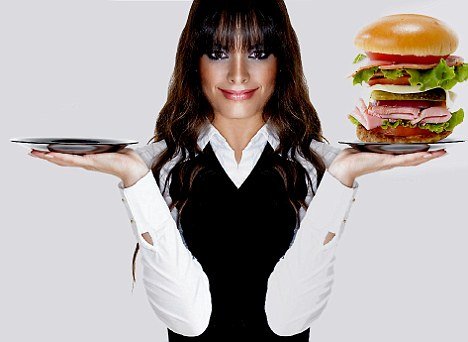
Gorging yourself on as many burgers, chips and cakes as you like one day then eating fewer calories than you find in a cheese sandwich the next might sound like a worrying eating disorder.
However, this regime of chomping away to your heart’s content one day, and virtually starving yourself the next is the latest diet craze. It’s known as “intermittent fasting” or “alternate-day dieting”, and devotees insist the pounds just drop off.
The diet soared in popularity after featuring in a BBC2 Horizon documentary a few weeks ago by health journalist Dr. Michael Mosley. After a month eating normally five days a week and eating just 600 calories the other two days – known as the 5/2 diet – Dr. Michael Mosley lost nearly a stone, reduced his body fat by about 25% and improved his blood sugar and cholesterol levels.
Scientific data seems to show that as well as helping to shift pounds, this alternate-day dieting can help us live longer and reduce the risk of diseases such as cancer, diabetes and even Alzheimer’s.
Now a book on the subject, The Alternate Day Diet, is on Amazon’s list of best-selling diet books, while on internet forums, fans of the plan are swapping tips for the best low-calorie meals for fast days.
However, the regime has drawn criticism from nutritionists who believe that any weight loss on the diet would not be sustainable – and claim that it could even trigger eating disorders.
“The idea that you have a very restricted diet on your <<fast>> days and can eat whatever you like on your <<feed>> days isn’t something I’m very comfortable with,” says Zoe Harcombe, author of The Obesity Epidemic book.
“I did this during my late teens and early 20s. It was called bulimia. My biggest concern is that it’s an approach that could encourage disordered eating in people who are prone to that sort of behavior.”
While every dieter will be used to hunger pangs, the side-effects of such extreme calorie restriction can be even more unpleasant.
“The body does its best to get us to eat,” says Zoe Harcombe.
“So if you’re only eating a quarter of the calories you need, you can expect to experience symptoms associated with low blood sugar. Anything from feeling light-headed and having shaky hands to feeling irritable and lacking concentration.”

The diet can also cause digestive problems. Followers are encouraged to up their water consumption on low calorie days.
If they don’t, they can find themselves constipated, with all the associated stomach cramps and bloating. Despite such concerns, many swear by the plan.
While the idea that you can eat anything on your free days sounds great – especially for dieters who struggle to stick to low-calorie eating plans long-term without falling off the wagon – many nutritionists believe that those on the alternate day diet could end up over-indulging on “feast” days, and actually put on weight.
However, Dr. Krista Varady of the University of Illinois in Chicago, one of the scientists involved in research into intermittent fasting, insists that this doesn’t happen.
“Our studies show that people end up losing weight because they can’t fully make up for the lack of food on the fast day on the feed day. And people in our studies didn’t binge. They only ate about 100% to 110% of their calorie needs.”
Opinion is divided on just exactly what a fast entails – some say you should eat nothing at all for anything from 17 to 24 hours, while others argue that you can have 500 calories, but they should all be consumed in a single midday meal.
Dr. Michael Mosley on the Horizon programme ate his 500 calories split over two meals, breakfast (ham and eggs) and dinner (steamed fish and vegetables), as he found that was the best way to avoid feeling hungry or deprived.
Nutritionists do agree that it is vital to eat nutrient-rich foods if you only eat 500 calories a day.
A brunch of kedgeree made from 100 g of smoked haddock, 50 g of wholegrain brown rice and a spring onion, and then a dinner of 100 g of grilled fillet steak with 100 g of steamed broccoli would give you a balanced diet and fall within the calorie restrictions.
It remains to be seen whether this is a long-term solution for those with weight problems, or is just another short-lived diet craze that will go the way of the Grapefruit Diet, the Cabbage Soup Diet, and other extreme plans women have subjected themselves to over the years.
HOW ALTERNATE DAY DIET CAN WORK
MONDAY
Anything you like
TUESDAY
Breakfast: 2 eggs scrambled and a slice of ham (250 calories)
Lunch: Nothing
Dinner: 100 g (uncooked weight) skinless chicken breast, grilled, served with 150 g new potatoes, boiled, and 100g broccoli, steamed (259 calories)
WEDNESDAY
Anything you like
THURSDAY
Breakfast: Kedgeree made from 100g cooked smoked haddock, 50 g (uncooked weight) of wholegrain brown rice, boiled, and a spring onion (265 calories)
Lunch: Nothing
Dinner: 100 g fillet steak, grilled, served with 100 g wild rocket and 100 g carrots, boiled (242 calories)
FRIDAY
Anything you like
SATURDAY
Anything you like
SUNDAY
Anything you like